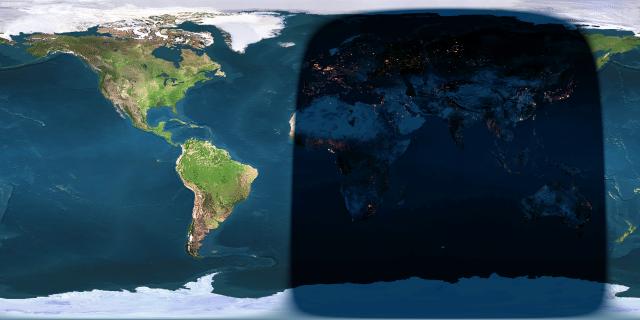Did You See the Harvest Moon?
Last night I made an announcement the harvest moon was rising. Then someone else said, “That’s not the harvest moon.” I thought I remembered reading something about it so today I had to look into it. Here’s what I found.
On September 16, the Harvest Moon
Tonight – September 16, 2016 – that full moon you’ll see ascending in the east after sunset is the Northern Hemisphere’s Harvest Moon.
Over the years, we’ve seen lots of informal uses of the term Harvest Moon. Some people (in the Northern Hemisphere) call the full moons of September and October by that name. And that’s fine. For the few months around the autumn equinox, the time of moonrise is close to the time of sunset for several evenings in a row, around the time of full moon. It’s as if there are several full moons during each autumn month.
So for example the moon you might have seen last night, September 15, looked very full and round in the sky. Did you call it a full moon? Did someone say it was the Harvest Moon? It probably looked like one!
Astronomers are scientists, though, and it’s no surprise that, to them, the term full moon or the name Harvest Moon means something very specific. To astronomers, the Harvest Moon is the full moon closest to the September equinox, and full moon comes at the instant when the moon is 180o from the sun in ecliptic – or celestial – longitude.
In 2016, this equinox takes place on September 22.
The closest full moon to the autumn equinox reaches the crest of its full phase on September 16 at 19:05 UTC. For us in the continental U.S., the moon turns precisely full during the daytime hours on Friday, September 16. By U.S. clocks, that full moon instant comes at 3:05 p.m. Eastern Daylight Time, 2:05 p.m. Central Daylight Time, 1:05 p.m. Mountain Daylight Time or 12:05 p.m. Pacific Daylight Time.
But don’t worry too much about the instant of full moon, or the time on your clock, or even where you are on the globe. No matter where you live worldwide, you’ll see a full-looking moon shining from dusk until dawn on September 16.
The September 16 full moon will rise in the east around sunset, climb highest up around midnight and will set in the west around sunrise. At the vicinity of full moon, the moon – as always – stays out all night long.
Is tonight’s moon the Harvest Moon? It sure is!

Day and night sides of Earth at the instant of full moon (2016 September 19 at 19:05 Universal Time) via Earth and Moon Viewer.
What’s the big deal about the Harvest Moon? Why are the full moons special in autumn? Around the time of the autumn equinox, the ecliptic – or the path of the sun, moon, and planets – makes a narrow angle with the horizon at sunset.
Every full moon rises around the time of sunset, and on average each successive moonrise comes about 50 minutes later daily. But, on September and October evenings – because of the narrow angle of the ecliptic to the horizon – the moon rises much sooner than the average.
So, instead of rising 50 minutes later in the days after full moon, the waning moon might rise only 35 minutes later, or thereabouts, for several days in a row (at mid-northern latitudes). At far northern latitudes – like at Fairbanks, Alaska – the moon rises about 15 minutes later for days on end.
That fact was important to people in earlier times. For farmers bringing in the harvest, before the days of tractor lights, it meant there was no long period of darkness between sunset and moonrise for several days after full moon. And that meant farmers could work on in the fields, bringing in the crops by moonlight. Hence the name Harvest Moon.
At our mid-northern latitudes, watch for the Harvest Moon to shine from dusk until dawn for the next few to several days, starting on September 16.
Bottom line: Enjoy the 2016 Harvest Moon!

Leave a Reply
You must be logged in to post a comment.